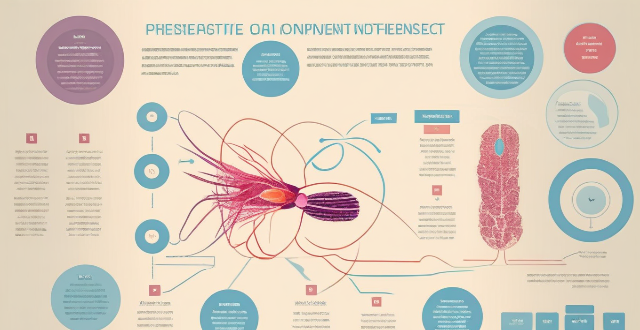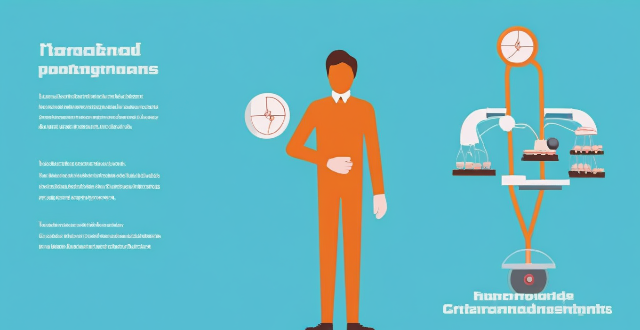Immune Virus

How do virus variants emerge ?
Virus variants emerge due to evolution, influenced byVirus variants emerge due to evolution, influenced bycombination, host immune influenced by factors like mutation, recombination, host immune response, and environmental factors. Mutations can make viruses more infectious or resistant to treatments, while recombination results in new viruses with characteristics from different parent viruses. The host's immune system drives the virus to mutate and develop new variants that can evade the immune response. Environmental factors like temperature and exposure to chemicals can also influence virus evolution. Understanding these mechanisms is crucial for preventing and controlling viral diseases.

Can vaccines protect against new virus variants ?
**Can Vaccines Protect Against New Virus Variants?** The ability of vaccines to protect against new virus variants depends on various factors, including the type of vaccine, the nature of the virus, and the rate of mutation. While some vaccines may provide cross-reactivity and adaptive immunity against multiple strains, others may require updates or booster shots to maintain protection against emerging variants. Public health measures such as masking, social distancing, and hand hygiene remain crucial in combination with vaccination efforts. Continuous global surveillance is essential for developing effective strategies to deal with new variants.

Are all virus variants equally contagious ?
Are all virus variants equally contagious? The answer to this question is not straightforward. Virus variants can differ in their transmissibility, depending on various factors such as their ability to bind to host cells, their replication rate, and the immune response of the host. Some variants may be more contagious than others, while others may have a lower transmission rate. One example of a variant that has been shown to be more contagious than others is the SARS-CoV-2 Omicron variant. This variant was first detected in South Africa in November 2021 and quickly spread around the world due to its high transmissibility. The Omicron variant has also been shown to be more resistant to some vaccines than other variants, which could further increase its spread. However, it is important to note that not all virus variants are equally contagious. Even within the same species of virus, different strains can vary greatly in their transmissibility. For example, the influenza virus has many different strains, each with its own characteristics in terms of transmissibility and severity of symptoms. In conclusion, while some virus variants may be more contagious than others, it is important to remember that not all viruses are created equal when it comes to their ability to spread from person to person.

Is it possible to create a universal flu vaccine that works against all strains of the virus ?
Is it possible to create a universal flu vaccine? The influenza virus is highly adaptable and mutates rapidly, making it challenging to develop a vaccine that works against all strains. However, recent advancements in research and technology have brought us closer to achieving this goal. Strategies for developing a universal flu vaccine include targeting conserved proteins within the virus, using molecular mimicry to trick the immune system into recognizing multiple strains, and utilizing mRNA technology. While there may still be obstacles to overcome, the potential benefits of a universal flu vaccine make it an exciting area of research.

Can exercise boost the immune system ?
Exercise can indeed boost the immune system through various mechanisms, including enhanced circulation, reduced inflammation, weight management, stress reduction, improved sleep, increased self-esteem and mental health, microbiome diversity, temperature regulation, prevention of chronic diseases, and social interaction. Regular moderate exercise is generally considered beneficial for the immune system, but it's essential to consult with healthcare professionals to determine the appropriate amount and intensity of exercise for individual needs and circumstances.

Is it true that certain superfoods can boost your immune system ?
Incorporating superfoods like citrus fruits, garlic, ginger, spinach, yogurt, nuts and seeds, blueberries, and turmeric into your diet can help support immune health by providing key nutrients such as vitamin C, vitamin D, zinc, protein, and antioxidants. These foods offer a range of benefits including boosting white blood cell production, reducing inflammation, supporting digestive health, and protecting against oxidative stress. However, it's important to maintain a balanced diet and lifestyle for overall immune support.

Can excessive training have negative effects on the immune system ?
Excessive training, or overtraining, can have negative effects on the immune system. Regular exercise enhances immune function by stimulating antibody and white blood cell production, reducing inflammation, and improving circulation. However, excessive training can cause chronic inflammation, oxidative stress, and hormonal imbalances that suppress immune function. Signs of overtraining syndrome include chronic fatigue, mood changes, and increased susceptibility to illness. To prevent overtraining and maintain immune health, individuals should follow a balanced training program, prioritize sleep, eat a nutrient-rich diet, and manage stress levels.

How does regular exercise contribute to boosting the immune system ?
Regular exercise has numerous health benefits, including boosting the immune system. It promotes increased blood circulation, reduces inflammation, helps in weight management, reduces stress, improves sleep quality, enhances gut health, increases antioxidant capacity, supports cardiovascular health, enhances mental health, and contributes to increased longevity. Incorporating regular physical activity into your lifestyle can support a strong and resilient immune system.

What makes a virus variant more dangerous ?
A virus variant becomes more dangerous due to increased transmissibility, greater virulence, and resistance to interventions. Factors such as higher replication rate, enhanced infectivity, longer shedding period, higher severity of illness, immune evasion, reduced antiviral efficacy, vaccine escape, and diagnostic challenges contribute to these traits. Environmental and host factors like population immunity levels, global travel, and evolutionary pressure also play a role.

How can I improve my diet to boost my immune system ?
Improving your diet is one of the best ways to boost your immune system. Here are some tips on how you can do that: ## Eat a Variety of Foods Eating a variety of foods ensures that you get all the essential nutrients your body needs. This includes fruits, vegetables, whole grains, lean proteins, and healthy fats. Aim for at least five servings of fruits and vegetables per day. ### Fruits and Vegetables - Apples - Bananas - Berries - Broccoli - Carrots - Spinach ### Whole Grains - Oats - Quinoa - Brown Rice ### Lean Proteins - Chicken breast - Fish (such as salmon or tuna) - Legumes (such as lentils or chickpeas) ### Healthy Fats - Avocados - Nuts (such as almonds or walnuts) - Seeds (such as chia or flaxseed) ## Stay Hydrated Drinking enough water is crucial for maintaining a healthy immune system. Aim for at least eight glasses of water per day, and more if you're active or it's hot outside. You can also stay hydrated by drinking herbal teas or eating water-rich foods like cucumbers, melons, and strawberries. ## Limit Processed Foods and Sugary Drinks Processed foods and sugary drinks can weaken your immune system by causing inflammation in your body. Try to limit these foods and drinks as much as possible, and opt for whole, nutrient-dense foods instead. ## Consider Taking Supplements If you're not getting enough vitamins and minerals from your diet, consider taking supplements. Some common supplements that may help boost your immune system include vitamin C, vitamin D, zinc, and probiotics. However, be sure to talk to your doctor before starting any new supplements.

Is there a specific duration or intensity of exercise needed to improve immune function ?
The relationship between exercise and immune function is complex, but research suggests that regular physical activity can enhance the immune system. However, both the duration and intensity of exercise play significant roles in achieving this beneficial effect. The American Heart Association recommends at least 150 minutes of moderate-intensity aerobic activity or 75 minutes of vigorous-intensity activity per week for adults. Engaging in prolonged periods of endurance exercise can temporarily suppress immune function due to increased stress on the body. Light activities like walking or yoga can still offer immune benefits by reducing stress and promoting overall health. Regular moderate to high-intensity exercises, such as jogging, cycling, or strength training, are generally considered optimal for enhancing immune function. Adequate rest and recovery are crucial for maintaining a healthy immune system. Combining different types of exercises (aerobic, strength training, flexibility work) can provide a well-rounded approach to enhancing immune function. Staying hydrated and consuming a balanced diet rich in nutrients supports both exercise performance and immune health. Other lifestyle habits, including sleep quality, stress management, and avoidance of harmful substances, also play a vital role in supporting immune function alongside exercise.

How long does immunity last after getting vaccinated against COVID-19 ?
Vaccines work by triggering an immune response that teaches the body how to fight off a virus. COVID-19 vaccines provide strong protection against severe illness and hospitalization, but it is still possible to contract the virus after being vaccinated. Immunity wanes over time, so booster shots are recommended to maintain protection. It is important to continue following safety measures such as wearing masks and social distancing to reduce the risk of infection.

How does consistent physical activity affect the immune system in relation to chronic disease prevention ?
The article discusses the impact of consistent physical activity on the immune system and its role in preventing chronic diseases. It explains that regular exercise can increase the number and activity of immune cells, reduce inflammation, and improve overall health. The article also provides recommendations for exercise and emphasizes the importance of incorporating physical activity into one's lifestyle to prevent chronic diseases and improve well-being.

What are the different variants of the virus ?
The text discusses different variants of the virus, including B.1.1.7 (Alpha), B.1.351 (Beta), P.1 (Gamma), B.1.617.2 (Delta), and C.37 (Epsilon). Each variant has distinct characteristics in terms of origin, transmission, severity, and vaccine efficacy. The emergence of these variants impacts the effectiveness of vaccines and treatments, but vaccination remains crucial in preventing severe illness and reducing the spread of the virus. Scientists are closely monitoring new variants and their potential impact on public health measures.

What is the importance of virus origin tracing ?
Virus origin tracing is crucial for preventing future outbreaks, understanding transmission patterns, identifying vulnerable populations, improving surveillance systems, and promoting global health security. By understanding where and how viruses originated, scientists can develop strategies to prevent similar viruses from emerging in the future. Tracing the origin of a virus also helps us understand its transmission patterns, which is essential for developing effective prevention and control measures. Additionally, virus origin tracing can help identify vulnerable populations that may be at higher risk of infection or severe illness, allowing public health officials to target prevention and treatment efforts to those who need them most. Finally, tracing the origin of a virus can improve surveillance systems for infectious diseases and promote global health security by helping countries work together to prevent and respond to emerging threats.

How many virus variants have been identified so far ?
This article identifies several notable virus variants, including the SARS-CoV-2 Variants (Alpha, Beta, Gamma, Delta, Omicron), Influenza Virus Variants (H1N1, H3N2, H5N1), HIV Variants (Subtype B, Subtype C, Various Recombinant Forms), Hepatitis C Virus Variants (Genotype 1, Genotype 2, Genotype 3), Dengue Virus Variants (DENV-1, DENV-2, DENV-3, DENV-4), and Zika Virus Variants (Asian Lineage, East African Lineage, West African Lineage). It highlights the constant emergence of new variants due to viruses mutating and adapting to their environments.

What is the impact of virus variants on public health ?
Virus variants are mutations that occur in viruses, which can affect their ability to cause disease. These mutations can be beneficial or harmful to public health depending on the virus and its characteristics. The essay explores the impact of virus variants on public health and discusses some of the key factors that influence their spread and severity. The importance of virus variants is highlighted as they can change the way a virus spreads and affects people. For example, the SARS-CoV-2 virus has several variants, including the Omicron variant, which is more transmissible than previous versions. This means that it can spread more easily from person to person, leading to higher rates of infection and hospitalization. Virus variants can also affect the effectiveness of vaccines and treatments. Vaccines are designed to target specific strains of a virus, but if a new variant emerges, it may not be as effective at preventing infection or reducing symptoms. Similarly, treatments may not work as well against certain variants, making them less effective at treating infections. Factors that influence virus variants include mutation rate, population density, and environmental factors. High mutation rates make it difficult for scientists to predict how viruses will behave over time and create challenges for public health officials when trying to control outbreaks. Population density increases the likelihood that new variants will emerge and spread rapidly through a population. Environmental factors such as temperature and humidity can affect how viruses survive outside of humans and how they spread inside of them. In conclusion, virus variants can have a significant impact on public health by changing how viruses spread and affecting the effectiveness of vaccines and treatments. Understanding the factors that influence virus variants is crucial for developing strategies to prevent and control outbreaks. As we continue to learn more about these viruses, it is important to stay informed and take steps to protect ourselves and others from infection.

How can international cooperation aid virus origin tracing efforts ?
The text discusses the importance of international cooperation in virus origin tracing efforts. It outlines various ways in which collaboration can aid this process, including sharing information and data through global databases and real-time reporting systems; pooling resources and expertise by establishing centralized laboratories and training programs; coordinating responses and policy making through global health organizations and international agreements; and building public trust through transparent communication and community engagement. The text emphasizes that successful virus origin tracing requires a multidisciplinary approach and the involvement of experts from different fields. It highlights the need for transparency, openness, and ethical considerations in research activities to ensure cultural sensitivity and community benefits. Overall, the text underscores the significance of international cooperation in unraveling the mysteries of virus origins and preventing future pandemics.

How do scientists use epidemiological data to trace virus origins ?
Epidemiology is the study of how diseases spread among populations. When a new virus emerges, scientists use epidemiological data to trace its origins. This involves several steps: collection of data about the disease, analysis of data to identify patterns, genomic sequencing to determine the relationship between viruses, field investigations to gather more information, and collaboration with other scientists to build a comprehensive picture of the virus's origins. By understanding how a virus emerged and spread, scientists can develop better strategies for preventing and controlling future outbreaks.

Can studying animal populations help us understand virus origins ?
Viruses often originate from animals, making the study of animal populations crucial for understanding virus origins and preventing disease outbreaks. Zoonotic diseases like influenza, HIV, and Ebola highlight the connection between animal and human health. Identifying animal reservoirs and understanding spillover mechanisms are key to preventing virus transmission. The "One Health" approach emphasizes collaboration across disciplines to address health risks at the human-animal-ecosystem interface. Conservation efforts and maintaining ecosystem health can reduce the risk of zoonotic diseases by preserving biodiversity and minimizing human-wildlife contact. Overall, monitoring animal populations is essential for anticipating and mitigating viral disease emergence and spread.

How can advancements in technology aid in more accurate virus origin tracing ?
The article discusses the role of technology in tracing virus origins, highlighting various techniques such as genomic sequencing, phylogenetic analysis, data mining, machine learning, satellite imagery, and remote sensing. These methods provide powerful tools for understanding how viruses evolve and spread over time, as well as identifying areas at risk for future outbreaks. The advancements in technology have revolutionized our ability to trace the origins of viruses, offering valuable insights into the ecological factors that contribute to virus emergence.

How do climate change and environmental factors impact virus origin tracing ?
Climate change and environmental factors play a significant role in virus origin tracing by affecting host and vector distribution, human activities, and interactions with the environment. Understanding these impacts is crucial for effective surveillance and research efforts to prevent and control infectious diseases.

What measures are being taken to control the spread of virus variants ?
The emergence of virus variants is a significant concern globally. Various measures are being implemented to control their spread, including surveillance and genomic sequencing, testing and tracing, border controls and travel restrictions, vaccination efforts, public health measures, research and development, and education and messaging. These strategies aim to mitigate the impact of variants and protect populations from more severe outbreaks. It is crucial for everyone to stay informed and continue following public health guidelines to contribute to these efforts.

How long does the virus that causes COVID-19 survive on surfaces, and how should those surfaces be cleaned and disinfected ?
The COVID-19 virus, SARS-CoV-2, can survive on surfaces for varying lengths of time, depending on factors such as the type of surface, temperature, humidity, and the amount of virus present. The timeline for virus survival on surfaces includes up to 4 hours on copper, up to 24 hours on cardboard, and up to 72 hours on plastic, stainless steel, glass, banknotes, and coins. To effectively clean and disinfect surfaces, it is recommended to follow a two-step process: cleaning the surface with soap or detergent and water, and then disinfecting the surface with an EPA-approved disinfectant. Examples of approved disinfectants include diluted bleach, alcohol solutions with at least 70% alcohol, hydrogen peroxide (3%), and quaternary ammonium compounds. It is important to wear gloves when handling disinfectants, ensure proper ventilation, never mix different cleaning products, and disinfect frequently touched surfaces regularly.